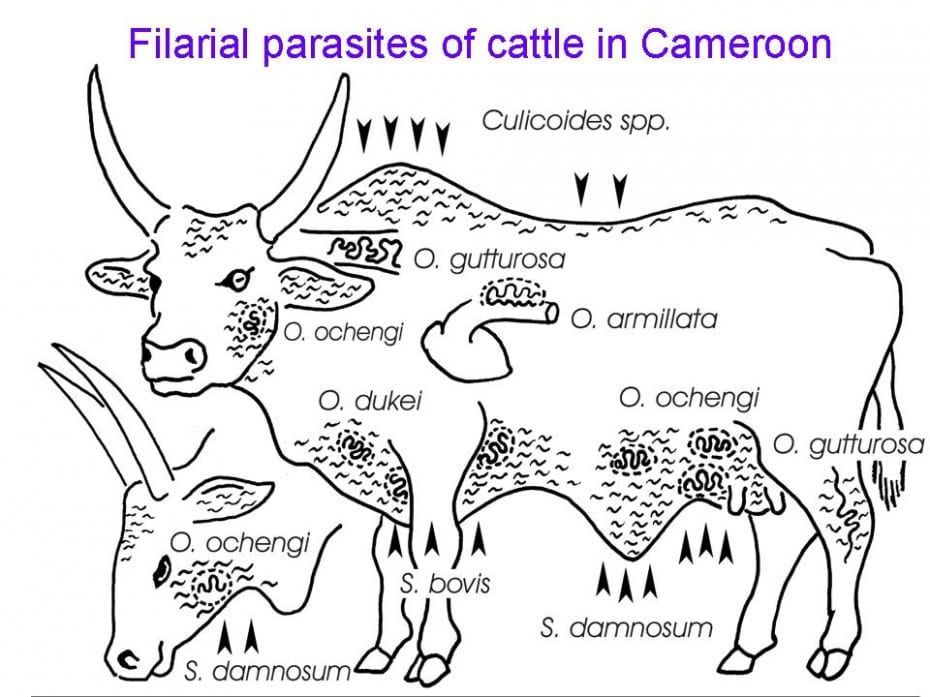In the parasitological laboratory at the Programme Onchocercoses Research Station in Ngaoundéré, we focus on the identification of parasites and vectors: Onchocerca and other filarial parasites in man, cattle, and other domestic and game animals, and their vector flies (Simuliidae, Tabanidae, Stomoxys, Culicidae, Ceratopogonidae and Glossinidae) .

Programme Onchocercoses staff


Every large animal in Africa (and elsewhere) hosts several parasite species, many of which are specific to only one host. The abundance of game animals, antelopes, reptiles and birds in Central Africa provides a wealth of parasites. Most of them are only little known and many transmission cycles remain still unknown.

unknown Onchocerca-nodule from an antelope
This is particularily true for the (at least) 5 filaria species we find in cattle, which is, by the way, one of the most studied animals anyway. The species are Onchocerca ochengi and O. dukei in the skin, O. gutturosa in the ligamentum nuchae , O. armillata in the aortic wall, Setaria labiatopapillosa in the abominal cavity (microfilariae in the blood!), and a yet unidentified Dipetalonema (Cercopithifilaria) species in the skin, from which we occasionally find the microfilariae.

Onchocerca parasites of cattle in Cameroon
We also discovered a new species in warthogs (O. ramachandrini), discribed the transmission of Onchocerca dukei and found a new species of Lappnema filariae (Roberdollfusidae), that have up to now only been known from rendeers in Norway and marsupalians in Australia. Many more filarial species can be found in antelopes, buffaloes, birds etc.
Bovine filarial species are brought into our laboratory every morning from the nearby slaughterhouse. Ca. 50 cattle are slaughtered every morning, and almost every animal harbours at least one filarial species. Trypanosomes, intestinal nematodes and cestodes, ticks and Piroplasmidae are extremely common. So there is an abundance of parasites of all kind, that we examine in the parasitology laboratory. The focus of our interest is on the diversity of parasites and their interactions in the same host. Parasites of major veterinary importance are studied at the IRAD in Wakwa (Trypanosomes, intestinal parasites, tick-born diseases, tuberculosis, viral diseases and dermatophilosis).


Leave a Reply
Want to join the discussion?Feel free to contribute!